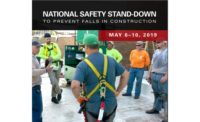 A new report published American Journal of Industrial Medicine reveals a widespread practice in the construction industry of hiding injuries rather than reporting them and risking retaliation.
A new report published American Journal of Industrial Medicine reveals a widespread practice in the construction industry of hiding injuries rather than reporting them and risking retaliation.
Researchers conducting the study, Safety, incentives, and the reporting of work-related injuries among union carpenters: "You're pretty much screwed if you get hurt at work," said that nearly one in six carpenters reported personally knowing of a case where a colleague had been hurt on the job but sought treatment through private insurance rather than filing a workers' compensation claim. About one third reported that on their job sites injuries were "rarely" or "never" reported.
The research team, headed up by Dr. Hester Lipscomb, administered an anonymous survey to more than 1,000 apprentice carpenters in metropolitan Chicago, downstate Illinois and the St. Louis area in order to examine the effects of programs offering rewards for workers and/or their supervisors for improved safety records or those that punish workers in some way for injury.
Fifty-eight percent reported some safety incentive or negative consequence of work-related injuries on their current jobsite. Reporting of work-related injuries was 50% less prevalent when workers were disciplined for injury experiences.
“Otherwise, we saw minimal evidence of association between injury reporting practices and safety incentive programs,” wrote the study’s authors. “However, considerable evidence of fear of reprisal for reporting injuries was revealed. Less than half (46.4%) reported that work-related injuries were reported in their current workplace all or most of the time; over 30% said they were almost never or rarely reported.”
Some comments by study respondents:
- "If you get hurt and report it you will be replaced."
- "The term 'fired before you hit the ground' is used too much in our industry."
- "They want it faster and if you are injured, go home and don't report it. There are a lot of other guys in line to replace you."
“There are multiple layers of disincentives to the reporting of work-related injuries that hamper understanding of risk and pose threats to workplace safety and productivity,” conclude the researchers. “These pressures do not arise in a vacuum and are likely influenced by a host of contextual factors. Efforts that help us understand variation across jobsites and time could be enlightening; such inquiries may require mixed methodologies and should be framed with consideration for the upper tiers of the public health hierarchy of hazard control.”



